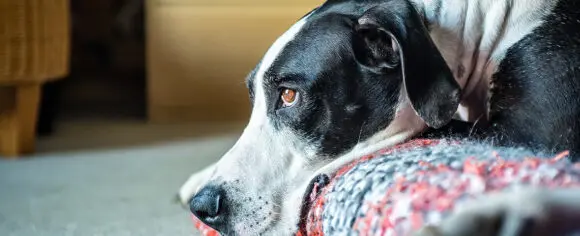Tooth resorption: Treatment and after-care.
Tooth resorption, formerly termed resorptive lesions, is a phenomenon that results in painful erosions in the surface of the tooth and/or bony replacement of the roots.
This condition most commonly occurs in feline patients; however, dogs (and even humans) are also at risk.
Three out of every four cats over the age of five are affected by tooth resorption. The condition is less common in dogs but is certainly  not considered rare. Over time, if the crown of the tooth is affected, the dentin and nerve can become exposed, resulting in chronic pain and infection.
not considered rare. Over time, if the crown of the tooth is affected, the dentin and nerve can become exposed, resulting in chronic pain and infection.
If left untreated for a long enough period, the crown can break resulting in tooth loss. Active research is being conducted; however, the cause of tooth resorption remains unknown. Different mechanisms are suspected.
How is tooth resorption treated?
Once a patient has been diagnosed with tooth resorption, radiographs (x-rays) are necessary to determine treatment. Unfortunately, nothing can be done to stop the resorptive process, and fillings tend to fall out.
In some cases, the distinction between the tooth and the neighboring bone is very clear (called a type 1 lesion), and the tooth can be extracted completely. In other cases, the bone surrounding the root has invaded the tooth, and a clear distinction, where tooth begins and bone ends, is not possible (termed a type 2 lesion). In these cases, a procedure called “crown amputation with intentional root retention” is performed.
Essentially, the painful components of the crown are removed, and root remnants are left in place to continue to resorb. Normally root material is not left behind in dental procedures; type 2 tooth resorption lesions are the exception. X-rays are always taken of the site following extraction and/or crown amputation to ensure all appropriate tooth material has been removed.
How will my pet do after treatment?
Regardless of treatment option, most patients will be sent home with pain medication and antibiotics following the procedure. Softened  or canned food will be recommended for 7-10 days following the procedure. Refer to the discharge instructions provided specifically for your pet.
or canned food will be recommended for 7-10 days following the procedure. Refer to the discharge instructions provided specifically for your pet.
Despite having a dental procedure, most patients recover quickly and are back to normal within 24-48 hours of the procedure; although, recovery for some patients may take a little longer. Once a patient develops tooth resorption, more teeth are likely to be affected.
As there is no known cure for this disease and no known way to prevent it, an annual oral exam and radiographic monitoring of the teeth are recommended to ensure your pet’s mouth remains healthy and comfortable. After the healing period of 10-14 days, daily brushing is also recommended to help minimize any inflammation secondary to the influence of periodontal disease.


